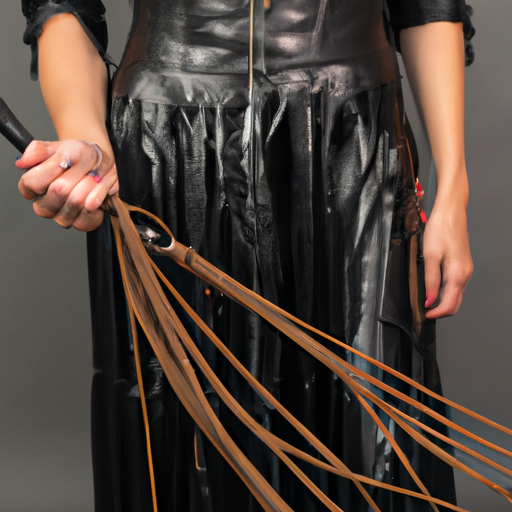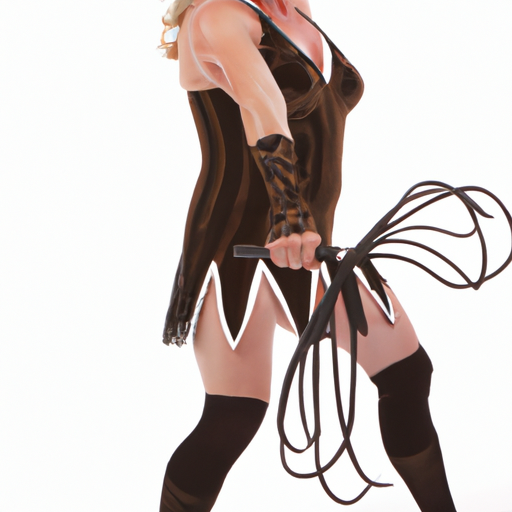Are there different variations or styles of femdom trample?
Femdom Trample: Exploring the Different Variations and Styles

Introduction:
In the realm of BDSM, femdom trample holds a unique place. It is a practice that combines elements of dominance, submission, and physical sensation. While it may not be everyone’s cup of tea, it is important to understand the different variations and styles of femdom trample for those who are interested or curious. In this blog post, we will explore the various aspects of femdom trample, shedding light on its history, techniques, and the diverse ways in which it can be enjoyed.
Understanding Femdom Trample:
Femdom trample is a practice that involves a dominant partner, typically a woman, stepping or walking on their submissive partner. This act is rooted in power dynamics, where the submissive derives pleasure from being physically dominated by the dominant partner. It is important to note that consent, communication, and trust are vital in any BDSM activity, including femdom trample.
Variations of Femdom Trample:
Barefoot Trample: This is perhaps one of the most common forms of femdom trample. The dominant partner walks or stands on the submissive’s body, using their bare feet. This can include stepping on the chest, stomach, back, or even the face, depending on the boundaries set by both partners.
High Heel Trample: As the name suggests, this variation involves the dominant partner wearing high heels while trampling the submissive. The pressure and sensation of the heels on the submissive’s body create a unique experience, combining pain and pleasure.
Boot Trample: In this variation, the dominant partner wears boots while trampling the submissive. The weight, texture, and sound of the boots add a different dimension to the trampling experience, enhancing the submissive’s sense of submission and surrender.
Stiletto Trample: Stiletto trample takes femdom trample to a more intense level. The dominant partner wears stiletto heels, which can increase the pressure and intensity of the trampling sensation. It requires a high level of trust and communication between both partners.
Trampling Furniture: Trampling furniture is a variation where the submissive acts as human furniture, such as a footstool, while the dominant partner walks or stands on them. This allows the dominant partner to exert their power and control over the submissive, who finds pleasure in being objectified.
Techniques and Safety:
When engaging in femdom trample, it is crucial to prioritize safety and ensure the well-being of both partners. Here are some important techniques and safety measures to consider:
Establishing boundaries: Before engaging in femdom trample, it is essential for both partners to discuss and establish clear boundaries. This includes discussing the intensity, duration, and areas of the body that are off-limits.
Communication: Consistent and open communication is key during the trampling session. The submissive partner should be encouraged to use a safeword or signal to indicate their comfort level or if they need the activity to stop.
Gradual progression: It is important to start slowly and gradually increase the intensity of the trampling. This allows the submissive partner to acclimate to the sensations and ensures their physical and emotional well-being.
Safety precautions: The dominant partner should be mindful of the submissive’s physical limitations and any pre-existing medical conditions. Maintaining a clean and safe environment is also crucial to prevent accidental injuries.
Conclusion:
Femdom trample encompasses a wide range of variations and styles, providing opportunities for exploration and experimentation within the realm of BDSM. It is essential to approach this practice with respect, open communication, and an understanding of the boundaries and desires of both partners. As with any BDSM activity, consent, safety, and trust are paramount. Published here.
What are some common misconceptions or stereotypes about femdom boots?
Femdom Boots: Debunking Common Misconceptions and Stereotypes

In the realm of fashion, there are countless styles and trends that cater to various tastes and preferences. One such style that often raises eyebrows and sparks curiosity is femdom boots. These bold and empowering footwear choices have been subject to numerous misconceptions and stereotypes. In this blog post, we aim to shed light on some of the most common misconceptions surrounding femdom boots and debunk them with factual information.
Misconception #1: Femdom boots are only worn by dominant women.
One of the most prevalent misconceptions about femdom boots is that they are exclusively worn by dominant women. While it is true that these boots are often associated with dominant or assertive personas, it is important to remember that fashion has no gender. Femdom boots can be worn by anyone who appreciates their aesthetic appeal and wishes to embrace their confidence. These boots are not limited to one gender; they are a fashion statement that transcends stereotypes.
Misconception #2: Femdom boots are uncomfortable and impractical.
Another common misconception is that femdom boots are uncomfortable and impractical. This belief stems from the assumption that these boots are solely designed for fetish purposes. However, this couldn’t be further from the truth. In reality, femdom boots come in a variety of styles, materials, and heel heights, offering versatility and comfort. Many brands prioritize functionality and provide features like cushioned insoles, adjustable straps, and sturdy soles to ensure wearability throughout the day.
Misconception #3: Femdom boots are only worn in specific settings.
Contrary to popular belief, femdom boots are not restricted to specific settings or occasions. While they may be an integral part of certain subcultures or alternative lifestyles, these boots can be incorporated into everyday fashion as well. From casual outings to formal events, femdom boots can add a touch of edge and confidence to any outfit. They can be paired with dresses, skirts, jeans, or even tailored suits, allowing individuals to express their unique style and personality.
Misconception #4: Femdom boots are an indication of aggressive behavior.
One of the most damaging stereotypes surrounding femdom boots is the belief that those who wear them are inherently aggressive or intimidating. This misconception fails to acknowledge that fashion choices do not determine one’s character or personality traits. Femdom boots, like any other fashion statement, allow individuals to express themselves creatively and confidently. It is important to refrain from making assumptions about someone’s personality based solely on their choice of footwear.
Misconception #5: Femdom boots are limited to one specific design.
Femdom boots come in a wide range of designs, catering to various tastes and style preferences. While some designs may feature bold hardware, towering platforms, or thigh-high lengths, others may have more subtle details and lower heels. It is crucial to understand that femdom boots encompass a broad spectrum of styles, allowing individuals to find the perfect pair that aligns with their personal style and comfort level.
In conclusion, femdom boots have been subject to numerous misconceptions and stereotypes. It is important to challenge these preconceived notions and embrace the diversity and inclusivity within the fashion world. Femdom boots offer empowerment, confidence, and self-expression to all individuals, regardless of their gender or lifestyle choices. By debunking these misconceptions, we can foster a more inclusive and understanding environment where fashion is celebrated in all its forms. So, next time you come across someone rocking a pair of femdom boots, appreciate their boldness and creativity, knowing that fashion knows no boundaries.